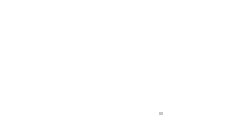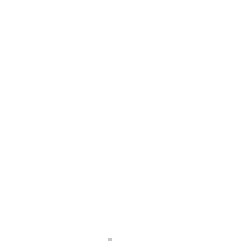It seems ironic to use an online channel to talk about the digital divide when more than a third of the world's population does not have access to this article. The internet was created as an inclusive space, but the reality is that its evolution has marginalized large swaths of people. One of the companies that is leading the internet is Google’s parent company Alphabet. The tech company’s current CEO, Sundar Pichai, grew up in the eastern Indian town of Chennai, a digitally developing country where most households are still unable to search on the platform run by their fellow countryman.
The International Telecommunication Union (ITU), a UN agency, has established 17 May as World Telecommunication and Information Society Day with a twofold objective: to raise awareness of “the possibilities that using the internet can bring” and to promote “the need to bridge the digital divide”. The ITU estimates that only 25% of people living in developing countries have access to the internet.
It has been 53 years since the ITU was founded and internet access is still a privilege enjoyed by only 63% of the world’s population, according to the estimates published in the organisation’s latest annual report. Kemly Camacho, a researcher and lecturer in development project programmes, identifies three different focuses or causes of the digital divide: lack of infrastructure, lack of training and limitations in accessing available resources.
Following the diagnosis, several examples are put forward that seek to make the internet an inclusive space.
A connected world is a better world
As Camacho notes, the primary cause of the digital divide is the lack of infrastructure needed to connect to the network. Physical barriers exist in remote places in Latin America or in villages in ’empty Spain’. The World Bank recognises the obstacle to development that the digital divide poses. Four out of ten Latin Americans in rural areas have no way to connect to the internet. But what if you didn't need an antenna to connect? Sateliot is a Catalan startup that provides global and continuous 5G connectivity through a fleet of nanosatellites that serve as telephone towers.
The company’s founder, Jaume Sanpera, has no doubt. "Internet today isn’t a luxury, it’s not like having Netflix”, he says. “It’s imperative that the internet reaches rural areas so that they have access to knowledge”.
Traditional or geostationary satellites are typically 33,000 kilometres away, while Sateliot’s low-orbit satellites are just 500 kilometres away. “We’ve moved satellites closer to Earth so that IoT (internet of things) devices can connect without the need for a dish”, explains Sateliot’s founder. Scalability is the main difference between Sanpera’s system and Starlink, the satellite internet service developed by Elon Musk. No antenna is required for Sateliot to provide service.
These devices, which Sanpera says they plan to bring to market in 2023, could provide equal coverage around the world. “When we scale the network for rural areas, we’ll have the same capacity in the northern hemisphere as in developing regions. We don’t plan to sell the service in developing countries, but to connect them to the infrastructure already in place free of charge. Therefore, we have started contacting NGOs in those parts of the world to provide them with free coverage”.
Bridges to digital skills
Sanpera underscores that the deployment of Sateliot’s network in rural areas will make it possible for seniors to tap into the potential of IoT. In addition to access to the network, seniors need to learn how to harness its benefits: digital natives are a step ahead compared to previous generations, who have been forced to adapt to digitalisation; as the expert Kemly Camacho pointed out, lack of training is the second cause of the digital divide.
Digital services must also be adapted to the needs of the elderly. Along these lines, this year the ITU is placing seniors at the centre of World Telecommunication and Information Society Day with the theme ‘Digital technologies for older people and healthy ageing’ and many companies are developing projects to make it easier for this collective to use their solutions.
The president of the '60 y mucho +' platform, Ana Margarito, highlighted this aspect at the How to improve the quality of life of our seniors event organised by BBVA Open Innovation as part of the InnovaHome Festival series, where participants discussed the inclusion of senior citizens. “The future lies in adapting to the needs of a growing sector. Therefore, we have to continue working on creating products and services that promote healthy ageing”, said Margarito.
One of the bank’s digital inclusivity strategies is the change that BBVA has made to its app in Spain. The 'simple mode' improves accessibility and makes it easier for senior customers to check their banking transactions and products, as well as perform their most common operations.
BBVA’s head of Mobile Banking in Spain, Javier García, explains that “the font size with this new version is 20% larger to make it easier to read. Plus, you can check account balances and movements at a glance, perform the most common transactions like transfers or Bizum, contact the manager or request an appointment with teller”.
To develop the app, “we’ve taken into account their preferences and barriers to use by analysing their most common operations and through a series of studies of a large group of customers and non-customers”, explains the head of Mobile Banking. “Branch managers, since they are best placed to understand the barriers that may exist for certain groups when using the app, were also consulted”, García concludes.
When they’re still in a learning process, people can be more vulnerable to scams like 'phishing' that aim to get users’ personal data. This has led to security being a cornerstone in the development of the app.
“For example, any customer can report a fraud, by phone as well, personalise cards by limiting cash withdrawals at ATMs or the use of the cards only at ATMs or certain shops, and activate the options for notifications to be sent to the mobile every time a transaction is made”, explains García.
Inclusive internet
Several studies recognise the relationship between the digital divide and the obstacle it poses to the socio-economic development of a country or region. To that end, the special advisor for Africa to UN Secretary-General António Guterres, and former Minister of Finance of Cabo Verde, Cristina Duarte, stresses that “digitalization must make civil societies more resilient, and that requires a clear regulatory framework and a skilled population”.
The coordinator of the Development Bank of Latin America’s digital agenda, Mauricio Agudelo, notes that “digital connectivity ensures better equity in access to the opportunities of the digital world”.
The pandemic further underscored the importance of having internet access. During the lockdown, when the world turned to the internet to avoid shutting down activities as crucial as going to school, two out of three school children lacked internet access at home. The lack of infrastructures that makes connecting to the internet possible, the lack of knowledge of certain groups when it comes to surfing the net and the lack of adaptation to their needs are three urgent needs, which is why the reduction of the digital divide is a challenge that is already flagged as priorities in various strategies. One of them is the objective defined by the Sustainable Development Goals, whose fulfilment implies closing the digital divide within eight years. Success would mean that every person could have safe access to the internet by 2030 and that everyone, regardless of age, could take advantage of its benefits. Fortunately, there are already innovative solutions geared towards achieving these goals.
Source:
https://www.bbva.com/en/low-orbit-satellites-and-the-internet-of-things-iot-against-the-digital-divide/










